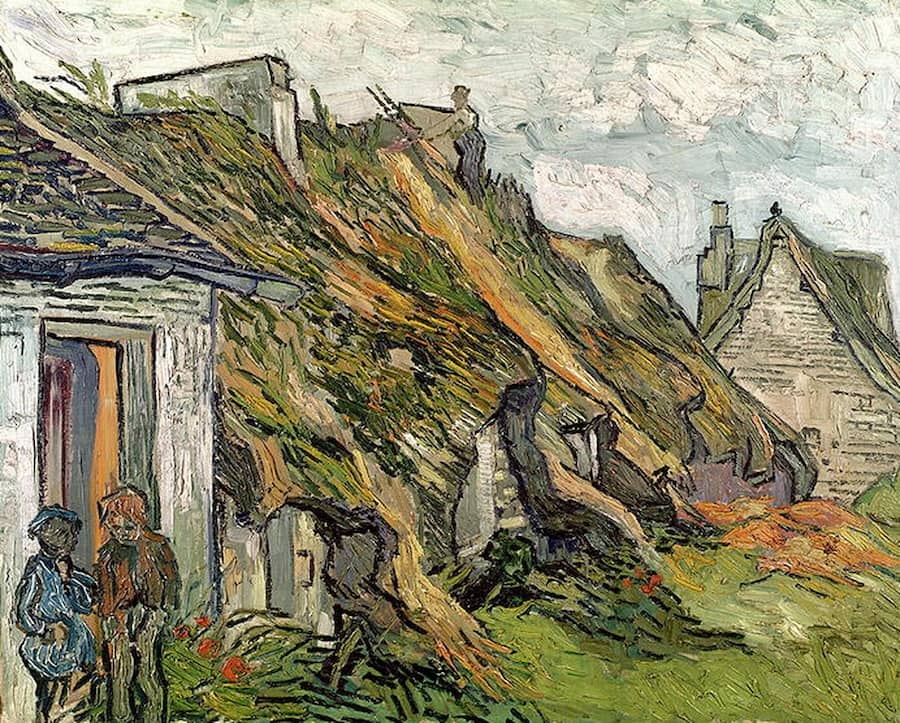Thatched Cottages in Chaponval, 1890 by Vincent van Gogh

This was one of the Van Gogh's lost paintings, mode shortly before he shot himself. It was painted at Choponvol, a small rural area very close to Auvers that was depicted by a number of artists including Paul Cezanne, Claude Monet and Henri Rousseau. However, where Cezanne's image is that of an idyllic agricultural setting, Van Gogh's illustrates the simple and impoverished houses of the local peasant community. The houses were built from sandstone with heavily thatched roofs that have assimilated an organic life in Van Gogh's painting, seeming to grow from the ground so that the dwellings are part of the landscape.
The effect is one of a universal landscape where buildings and the two small peasant figures in the foreground become virtually indistinguishable against their natural surroundings. A direct railway line that had been built in 1846 had made travel between Paris and this area much easier, but it was still a place relatively untouched by modern advancements. Although the Industrial Revolution had created a surge of commercial, technical and economic changes, these were most apparent in the towns, and rural France remained inherently simple and untouched until well into the twentieth century.




















